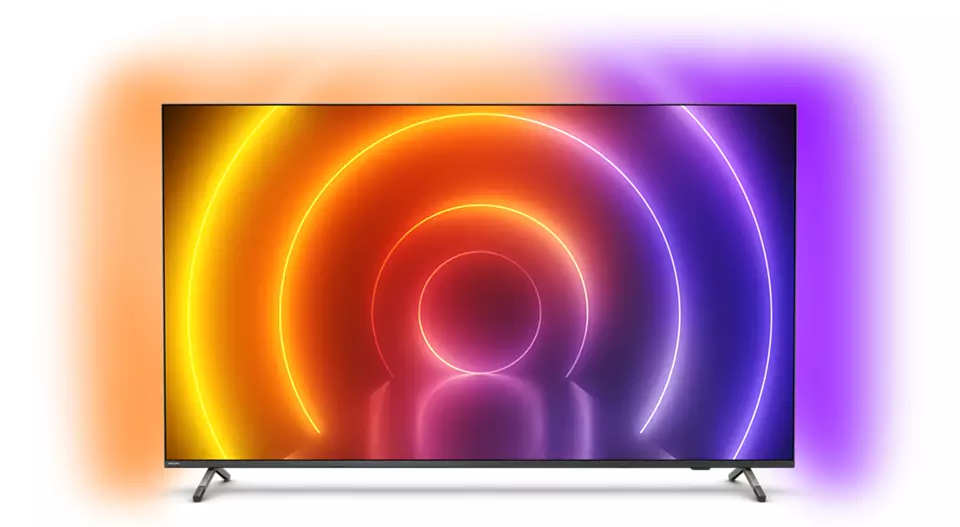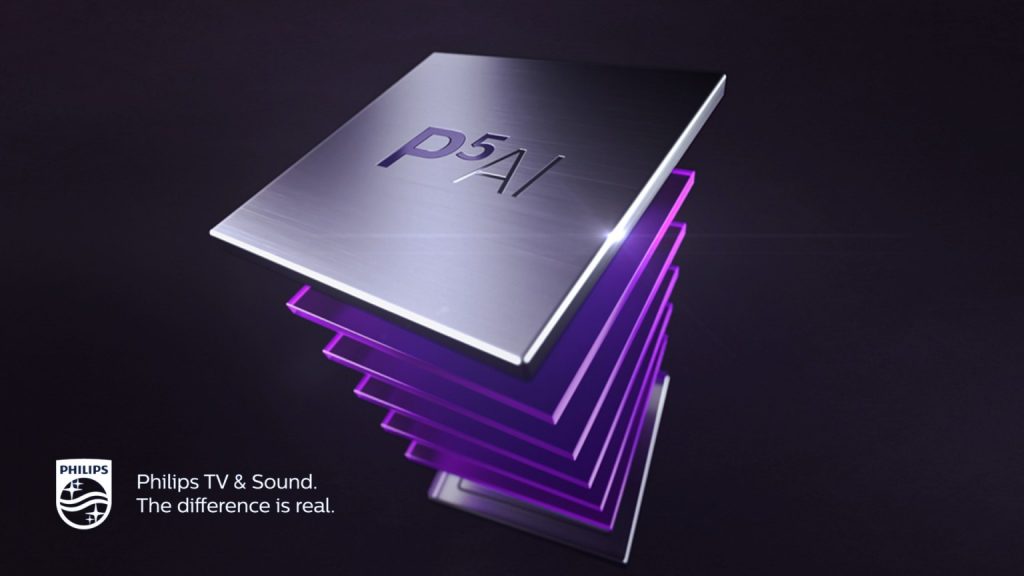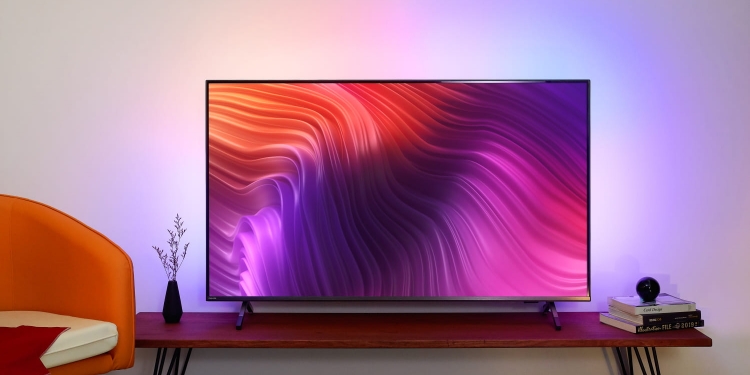Philips is launching its 8500 series UHD or 4K Android TV here in Malaysia. With a launch promotion price of RM2,999, it is the cheapest way to get a 4K Android TV with variable refresh rate (VRR). But are there any major compromises that Philips had to make to offer the TV at this price? Well let’s examine the details.
Design wise, the 8500 series is simple and understated. It has a slim bezel surrounding the display giving it a premium look. There is a Philips logo at the bottom left of the bezel, but it’s hardly noticeable. There are 2 legs at each end of the TV, lifting it off the ground enough to fit a compact soundbar. If you plan on using a bigger sound bar, you have the option of wall mounting the TV using the 300mm x 300mm VESA mount at the back.

Philips is using Google’s Android TV 10 (Q) operating system. This means that you will have access to Google’s Play Store to download popular video streaming services like Netflix, Disney+ Hotstar, Amazon Prime, etc. Since it’s Android, you can find a large curation of video, music, and gaming apps. The TV remote has a built-in microphone for Google Assistant if you need to do a voice search or voice command.
Displaying all your content is a 4K LED LCD panel. Processing is handled by a “quad core processor” with Philips’ P5 Perfect Picture Engine for image processing. I have not watched on a Philips TV that uses this image processor, so I can’t comment on the image quality. The LED lighting on this TV is a Micro Dimming Pro which basically means that it is a standard backlit TV. The lack of full array local dimming zones means that contrast ratio, black levels and colour will not be amazing. However full array local diming is a premium feature, so I will give Philips a pass on this.

As for memory and storage, they are 4GB and 32GB respectively. Philips is claiming the storage amount given exceeds the industry standard, which is between 8GB and 16GB. Well, that’s because up until now, you really don’t need that much storage on a TV as video and music apps don’t really take up a lot of space. For example, the three popular video streaming services mentioned earlier, take up a combined storage of less than 600MB.
However, Philips could be future proofing their TVs for the inevitable game streaming services that will be natively available on the TV. So, the larger storage can come in handy for saved game files, gameplay recording, and screenshots.
This TV also supports all the major HRD standards like HDR10, HDR 10+, HLG and Dolby Vision. But, the HDR effect is only as good as the brightness of panel. The brighter the panel, the more prominent the HDR effect. However, there is no brightness information given by Philips, so I can’t guess the quality of HDR contents. Furthermore, it doesn’t have the popular Filmmaker Mode preset. This preset follows the guidelines set by The Ultra High Definition Alliance. What it essentially does is disables all post processing of the TV and gives you a picture that is the way the filmmakers intended.
However, if you’re looking for a TV to pair with your fancy new next gen consoles, then none of these will matter much to you. What will interest you though is that this TV supports auto low latency mode (ALLM) and variable refresh rate (VRR) support. ALLM will automatically switch your TV to game mode to reduce input lag. On the other hand, VRR will prevent screen tearing by constantly matching the refresh rate of the TV to your gaming device.
But, there is no mention about 120Hz support on the product page, which is a shame considering they have ticked the boxes on VRR and ALLM. But, if you prioritise picture quality in your games, then this won’t concern as both the PS5 and Xbox Series X can barely hold 60 fps at 4K as is.
Philips also took a page out of gaming monitors and included RGB lighting called Ambilight. This is the type where the light creates a glow on the wall behind. The Ambilight software will analyse the colours being displayed on the screen and duplicate it using the RGB lighting on the wall. This is awesome for gamers who like RGB but Philips allows this feature to be used with movies and music. How many people who want to be distracted by glowing colours while watching a movie remains to be seen, but my guess is not many. For most, this is more like something you will only show your mates once and forget about it.

Speaking about music, Philips has put two, 10-watt speakers in this TV. They say it is capable of Dolby Atmos which is a massive exaggeration with just two dinky speakers. I’ve seen soundbars with dedicated Atmos channels fail to reproduce the sound. TV speakers on anything, but the most high-end TVs, sound mediocre at best. So just get a good sound bar or a dedicated home theatre system if you want the true Atmos sound experience.
Two other audio features that Philips highlights on their product page is that the TV has support for DTS Play-Fi ecosystem and something called Mimi Sound which is basically a personalised equaliser tuner. You can find a similar system on Samsung phones under the sound setting that does the same when wearing earphones if you’re curious about this equalizer function.
Finally, rounding things up, let’s take a look at the I/O ports on the TV. There are 4 HDMI ports that, according to Philips, are all capable of audio return channel (ARC). HDMI 1 and 2 have support for VRR, while only HDMI 2 has support for enhanced audio return channel (eARC). There is no mention of any HDMI 2.1 ports here, so how they are getting eARC support is confusing. Moving on there are 2 USB ports and since Philips does not explicitly say which version, it’s safe to assume they are USB 2.0 ports. You will also find a S/PDIF and ethernet port, along with a 3.5mm headphone jack. Wi-Fi ac and Bluetooth 5.0 radios are available for wireless connectivity.

As for pricing, Philips is having a special launch promo price. No details were shared on the timeframe of the promo so if you’re interested, you should act fast.
50″ PUT8516 – RM3,299 RM2,999
55″ PUT8516 – RM3,599 RM3,299
75″ PUT8516 – RM7,199 RM6,599
In terms of competition, if you’re looking for a TV for gaming, the Samsung UA50AU9000KXXM 50″ UHD 4K Smart TV with a RRP of RM3,499 has VRR. However, it’s an older model and runs on Samsung’s proprietary Tizen OS. So, compatibility with future apps will be challenging.
For picture quality, at this price, you will be hard-pressed to find one that does not make compromises. For example, LG’s 50UP7750PTB 50″ Smart UHD TV with a RRP of RM2,999 comes with Filmmaker Mode. But it does not run Android TV, so your app options will be limited to what LG offers on its Web OS.
For more information on the Philips 8500 series TVs and where to purchase it, head on over to philips.com.my.
As of writing, this TV is not yet available on Philips’ Lazada and Shopee stores.








